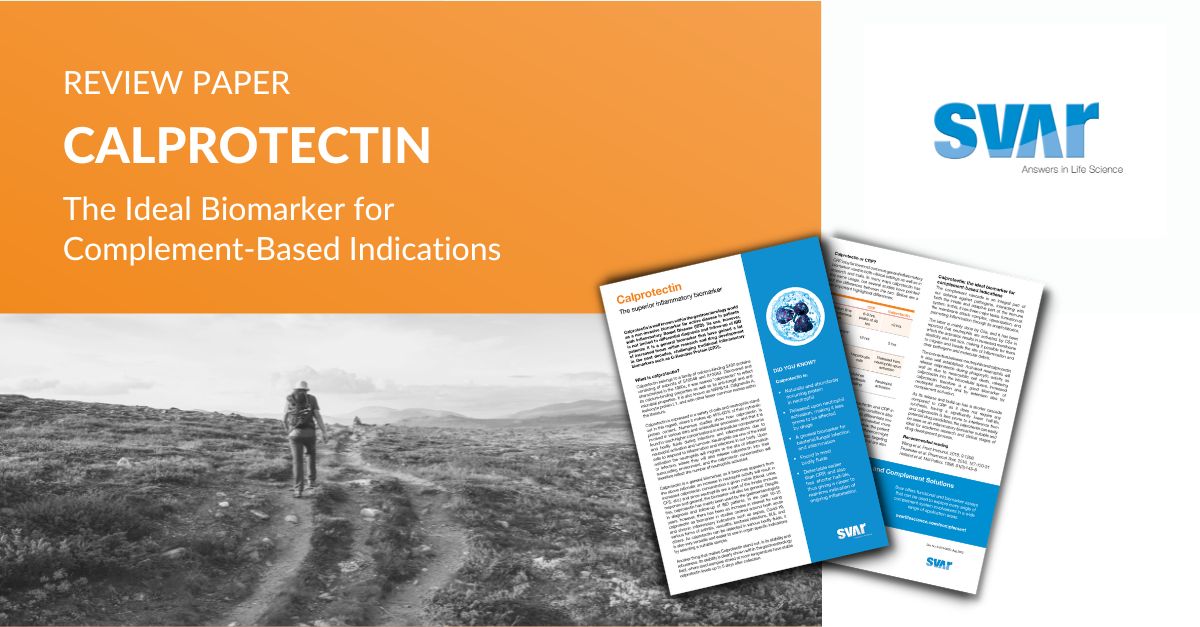Calprotectin is well known in gastroenterology as a non-invasive biomarker for active disease in patients with Inflammatory Bowel Disease (IBD). Its use, however, is not limited to differential diagnosis and follow-up of IBD patients; it is a general biomarker that has gained a lot of increased focus within research and drug development in the past decades, challenging traditional inflammatory biomarkers such as C-Reactive Protein (CRP).


Calprotectin is well known in gastroenterology as a non-invasive biomarker for active disease in patients with Inflammatory Bowel Disease (IBD). Its use, however, is not limited to differential diagnosis and follow-up of IBD patients; it is a general biomarker that has gained a lot of increased focus within research and drug development in the past decades, challenging traditional inflammatory biomarkers such as C-Reactive Protein (CRP).
Calprotectin is expressed in a variety of cells, and neutrophils stand out in this regard, where it makes up 45%-60% of their cytosolic protein content. Numerous studies show how calprotectin is involved in various intra and extracellular processes and that it is found in much higher concentrations in extracellular compartments and bodily fluids during infections and inflammations due to neutrophil activation and turnover. Neutrophils are one of the initial cells to respond to inflammation and infections in our body. Upon activation, the neutrophils migrate to the site of inflammation or infection, where they will also release calprotectin into the surrounding environment. Consequently, calprotectin concentration levels can be used as a measure of the number of neutrophils activated.
Learn about calprotectin and find out what makes it an excellent biomarker for complement-based indications. Complete the form to download the paper.